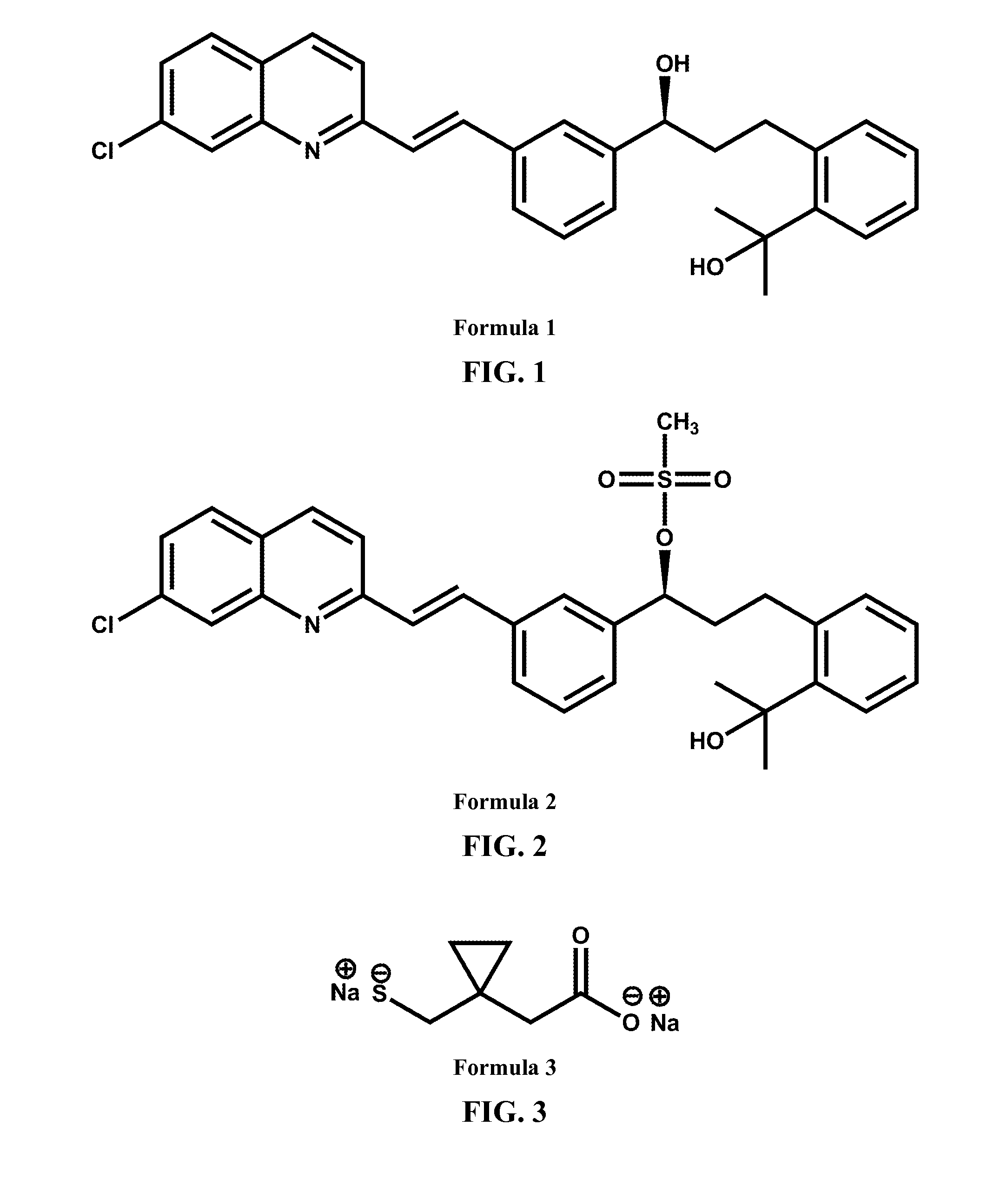Process for the preparation of sodium salt of 1-(((1(r)-(3-(2-(7-chloro-2-quinolinyl)-ethenyl)phenyl)-3-(2-(1-hydroxy-1-methylethyl)phenyl)propyl)sulfanyl)methyl)cyclopropaneacetic acid
a technology of cyclopropaneacetic acid and sodium salt, which is applied in the field of new sodium salt preparation methods of 1((1(r)(3(2(7chloro2quinolinyl)ethenyl)phenyl)propyl)sulfanyl)methyl) cyclopropaneacetic acid, can solve the problems of limiting the application of crystalline methanesulfonate in the industrial scale, and the stability of 2-
- Summary
- Abstract
- Description
- Claims
- Application Information
AI Technical Summary
Benefits of technology
Problems solved by technology
Method used
Image
Examples
example i
Preparation of 1-(((1(R)-(3-(2-(7-chloro-2-quinolinyl)-ethenyl)phenyl)-3-(2-(1-hydroxy-1-methylethyl)phenyl)propyl)sulfanyl)methyl)cyclopropaneacetic acid tert-butylamine salt
[0046]Stage 1.
[0047]A 1000 mL glass reactor fitted with a mechanical stirrer, thermometer and nitrogen inlet was flushed with nitrogen. 570 mL of N,N-dimethylformamide and 23.31 g (0.2426 mol) of sodium tert-butanolate was added under nitrogen flow and the content was stirred at 20±5° C. until the salt dissolved completely. 17.28 g (0.1182 mol) of solid 1-(sulfanylmethyl)cyclopropaneacetic acid was added to the resulting solution with vigorous stirring (exothermic reaction, temperature increase of approx. 10° C.). The resulting suspension with a jelly-like consistency was stirred vigorously under nitrogen flow for at least one hour at >15° C. The content was then cooled to 10-15° C.
[0048]Stage 2.
[0049]A 250 mL three-necked flask fitted with a stirrer, thermometer and dropping funnel was flushed with nitrogen. 4...
example ii
Preparation of sodium 1-(((1(R)-(3-(2-(7-chloro-2-quinolinyl)-ethenyl)phenyl)-3-(2-(1-hydroxy-1-methylethyl)phenyl)propyl)sulfanyl)methyl)cyclopropaneacetate
[0061]20.5 g of purified Montelukast tert-butylamine salt (99.7% purity as HPLC tested) was poured into a 500 mL flask fitted with a stirrer, thermometer, coller and nitrogen inlet (powder X-ray diffraction pattern shown in FIG. 2). Subsequently, 174 mL of dichloromethane and 1.78 mL of concentrated acetic acid were added. The resulting clear Montelukast solution in dichloromethane was washed twice with 102.5 mL water portions. The aqueous phases after washing were discarded and 13.29 mL of 2.34 M sodium hydroxide methanolic solution was added to the organic phase. 102.5 mL of the solvent was distilled off from the resulting solution under atmospheric pressure; thereafter, 82 mL of dichloromethane were added and 102.5 mL of the solvent were distilled off again. The mixture after distillation was filtered warm through filter pape...
PUM
 Login to View More
Login to View More Abstract
Description
Claims
Application Information
 Login to View More
Login to View More - R&D
- Intellectual Property
- Life Sciences
- Materials
- Tech Scout
- Unparalleled Data Quality
- Higher Quality Content
- 60% Fewer Hallucinations
Browse by: Latest US Patents, China's latest patents, Technical Efficacy Thesaurus, Application Domain, Technology Topic, Popular Technical Reports.
© 2025 PatSnap. All rights reserved.Legal|Privacy policy|Modern Slavery Act Transparency Statement|Sitemap|About US| Contact US: help@patsnap.com



